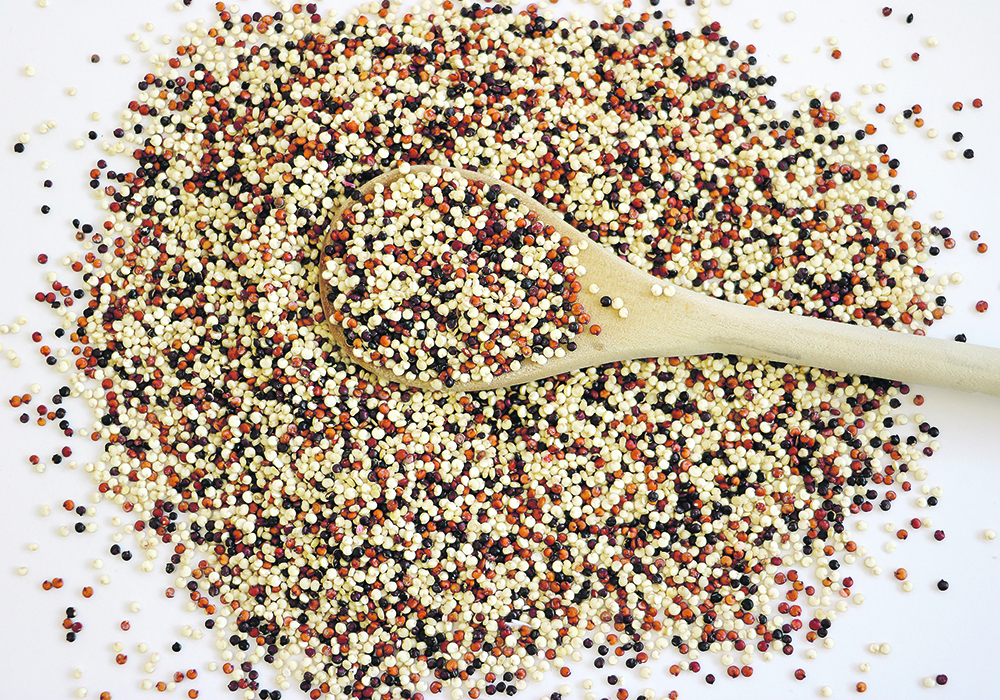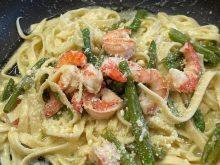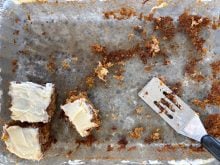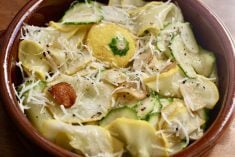During the early 2000s,the search for innovative crops to grow on the Prairies had resulted in the introduction of several crops. Two of particular interest were quinoa, an ancient seed from South America, and haskap berries, which had been used for hundreds of years in Japan.
Quinoa (keen–wah) is a small seed from the spinach family of plants. The ancient Incas called it the mother grain because it gave them health and vigour. We now know that it is the best source of plant-based protein available because it contains all the essential amino acids that humans need.
It also contains large amounts of antioxidants and is high in both soluble and insoluble fibre.
Read Also

Rural Manitoba resources slim on natural disaster planning
A study from Brandon University’s Rural Development Institute has found that many rural and small municipalities don’t have the staff or resources to make formal climate plans against natural disaster.
As well, quinoa contains vitamins E, B2 and B6, folic acid and biotin, calcium, phosphorus, copper, manganese and complex carbohydrates. In addition, it is also high in magnesium, potassium, zinc and iron. With this powerful nutrient profile, it is often referred to as “super food.”
Quinoa has a low glycemic index, making it a great food for people with diabetes or for those who are trying to lose weight. It is gluten free and fits into any diet, whether vegan, athletic or heart healthy.
The mild flavour of quinoa blends well with other food, it cooks in 15 minutes and is available whole as white, red or black seeds or processed into flour, flakes or puffs.
Home economist and food columnist Dorothy Long gave the following preparation guidelines in her March 19, 2015, column.
Quinoa has a bitter-tasting, natural protective saponin coating, so rinse the seeds well to remove it and then drain well. Toast seeds slightly to bring out a nutty flavour before adding liquid.
Cook in a one part quinoa to two parts water or stock ratio. Over medium heat, bring liquid to a boil and add quinoa. Turn heat down and simmer until liquid is absorbed, about 15 minutes. It should be tender but still firm to bite. It’s done when germ separates, making it look like a curly Q.
Drain well, return quinoa to the pot and remove from heat. Cover with a tea towel and replace lid, allowing it to steam as it cools to produce fluffy quinoa.
Quinoa can also be cooked in a rice cooker.
Serve quinoa warm or cool and added to salads and side dishes.
Quinoa flour has a nutty flavour and is gluten-free. Quinoa flakes are similar in texture and preparation as rolled oats.
Hot quinoa pistachio cereal
- 1/2 c. quinoa 125 mL
- 1 c. water 250 mL
- 2 tbsp. chopped unsalted pistachios 30 mL
- 1/4 tsp. pure vanilla extract 1 mL
- 1/2 c. low-fat plain thick Greek yogurt 125 mL
- 2 tsp. liquid honey 10 mL
Place quinoa in a fine-mesh sieve in a bowl of water, use a spoon to stir and rub quinoa to remove the natural saponin coating. Lift sieve to drain, shake quinoa into a medium saucepan, add water and bring to a boil. Reduce heat to simmer, cover and cook for 15 to 17 minutes. Remove from heat, stir in pistachios and vanilla. Divide between two dishes and top with yogurt and honey. Serve.
Alternatively use 1 1/2 cups (375 mL) cooked quinoa, reheat and add other ingredients.
Serves two.
Adapted from Quinoa Revolution, by Patricia Green and Carolyn Hemming, in the Feb. 7, 2019, issue.
Moist chocolate cake
- 2/3 c. white or golden quinoa 175 mL
- 1 1/2 c. water 325 mL
- 1/3 c. milk 75 mL
- 4 large eggs
- 1 tsp. pure vanilla extract 5 mL
- 3/4 c. butter, melted and cooled 175 mL
- 1 1/2 c. white sugar 375 mL
- 1 c. unsweetened cocoa powder 250 mL
- 1 1/2 tsp. baking powder 7.5 mL
- 1/2 tsp. baking soda 2 mL
- 1/2 tsp. salt 2 mL
Rinse quinoa and then bring it and water to a boil in a medium saucepan. Cover, reduce heat and cook 10 minutes. Turn off heat and leave on burner for another 10 minutes. Fluff with a fork and cool.
Preheat oven to 350 F (180 C) Lightly grease two eight-inch (20 cm) round or square cake pans. Line the bottom with parchment paper.
Combine milk, eggs and vanilla in a blender or food processor. Add two cups (500 mL) of cooked quinoa and butter and blend until smooth.
Whisk together sugar, cocoa, baking powder, baking soda and salt in a medium bowl. Add eggs and quinoa mixture, mix well. Divide between cake pans and spread batter evenly.
Bake on centre oven rack for 40 to 45 minutes or until a toothpick inserted in centre comes out clean.
Remove from oven and cool completely in pan before serving. Dust with icing sugar or frosting or top with fresh fruit or yogurt and fresh fruit.
Store in sealed container in refrigerator for up to one week or freeze for up to one month.
Note: bake in parchment paper-lined muffin tins for 20 to 25 minutes. Yields 24 cupcakes.
Adapted from Quinoa the Everyday Superfood 365, by Patricia Green and Carolyn Hemming, in the Aug. 28, 2014, issue.
Haskap
Haskap berries were a recent addition to the Canadian commercial fruit production and garden scene in 2010, thanks mainly to the plant breeding program at the University of Saskatchewan led by researcher Bob Bors.
He and his colleagues had worked to combine the best traits from haskap plants collected from across Canada, Japan and Russia. Their goal was to develop varieties that could be mechanically harvested, had great taste and would bear fruit for an extended period of time.
With a tolerance to cold temperatures and early fruiting, haskap was suited for northern growing. Typically, it bears fruit in mid-June, providing the first fresh fruit of the season. It is an elongated dusty bluish-purple berry, most commonly called by its Japanese name, haskap, but is also known as honeyberry, sweet berry or blue honeysuckle. It is native to the northern boreal forests in Asia, Europe and North America.
Haskap has a unique flavour that has been compared to a combination of raspberry, blueberry, saskatoon and blackberry. The skin is delicate and tends to melt in your mouth.
Japanese call haskap the fruit of longevity and vision. The berries are high in vitamins C and A, potassium, fibre and high levels of antioxidants.
Sarah’s haskap jam
Sarah Galvin had developed this jam recipe and posted it on her food blog at allourfingersinthepie.blogspot.ca.
- 2 c. frozen haskap 500 mL
- 2 c. sugar 500 mL
- 1/4 c. fresh lemon juice 60 mL
Heat three clean 250 or 236 ml mason jars on a rack in a boiling water canner, and keep jars hot until ready to use.
Mix haskap with sugar and bring to a boil. Add lemon juice. Continue to boil until mixture reaches jam stage. Skim off any scum that forms. To test jam put a one-half teaspoon (2 mL) of jam on a freezer chilled plate. Let jam cool. If mixture does not run when plate is tipped, it is thick enough.
Quickly ladle jam into a hot jar, leaving a 1/4 inch (0.5 cm) head space. Centre a sealing disc on clean jar rim. Screw band down until resistance is met and then increase to fingertip tight. Return filled jar to rack in canner.
Fill remaining jars, place in canner and cover jars with at least one inch of water. Cover canner and bring water to a full rolling boil before starting to count processing time. At altitudes up to 1,000 feet (305 metres), process for 10 minutes.
When processing time is complete, remove canner lid. Wait five minutes and then remove jars without tilting. Cool upright on a protected work surface and leave undisturbed for 24 hours. Do not retighten screw bands. After cooling, check jar seals. Sealed discs curve downward. Label and store jars in a cool, dark place.
Adapted from Sarah Galvin in the July 5, 2012, issue.
This jam is intensely flavoured and a little goes a long way. Galvin prefers to use the jam in haskap crumble squares rather than on toast.
Haskap crumble squares
- 1 1/2 c. unbleached flour 375 mL
- 1 1/2 c. rolled oats 375 mL
- 3/4 c. chopped almonds 175 mL
- 1 c. brown sugar 250 mL
- 1 tsp. baking powder 15 mL
- 1/2 tsp. cinnamon 7 mL
- 1/4 tsp. salt 1 mL
- 1 c. unsalted butter, at room temperature 250 mL
- 1 1/2 c. haskap jam 250-375 mL
Preheat oven to 375F (190 C). Grease a nine by nine inch (22 by 22 cm) baking pan. In a large bowl, mix dry ingredients except almonds. Cut in butter until mixture is crumbly. Set aside one cup (250 mL) of mixture for topping.
Press crumble on bottom of baking pan. Evenly spread a thin layer of jam over crumble. Sprinkle with chopped almonds and reserved crumb mixture. Pat down gently.
Bake for 30 to 35 minutes until golden. Cool completely before cutting into squares.
Note: haskap could probably be substituted into any recipe that uses raspberries or blackberries.
Adapted from Sarah Galvin in the July 5, 2012, issue.
Betty Ann Deobald is a home economist from Rosetown, Sask., and a member of Team Resources. Contact: team@producer.com.
















